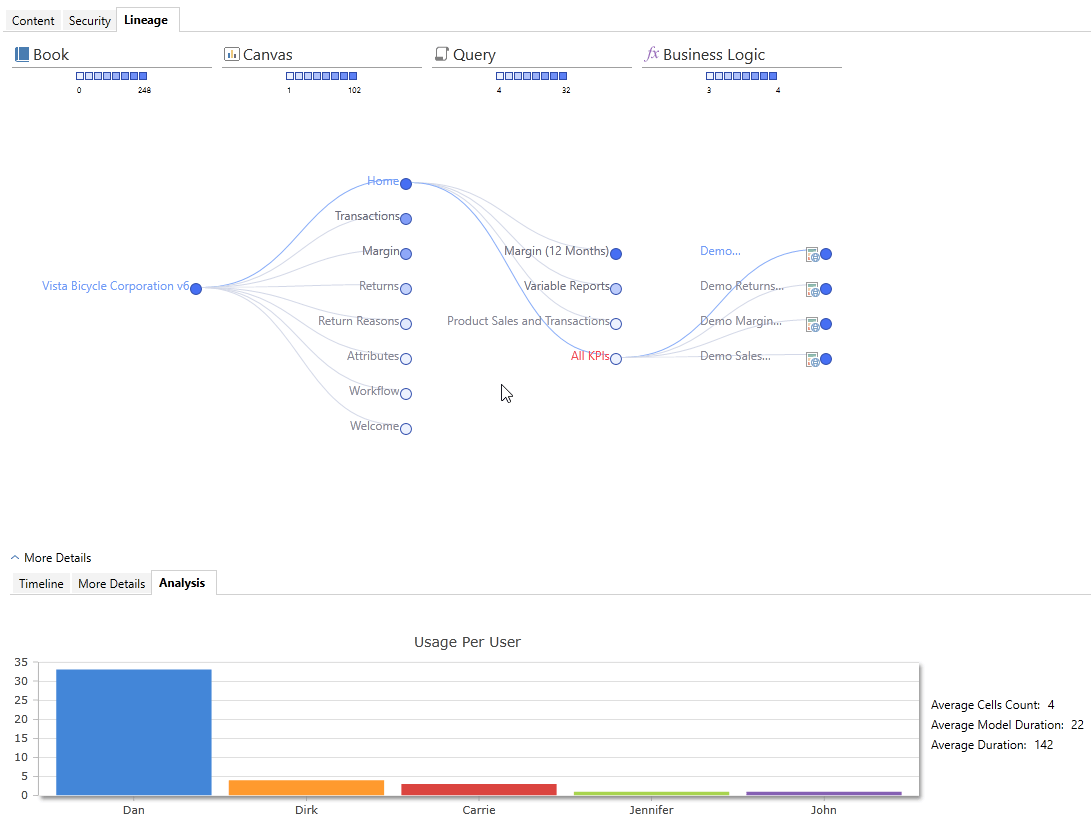Everyone using data to make decisions is a laudable goal, but how you reach it is critical. “Analytics for all” sounds empowering, but if everyone is fending for themselves, decisions made can be as harmful as they are expedient. In many organizations, there’s tension between two critical needs – business users immediately interacting with their own data and IT keeping systems operating securely.
Traditional IT-only solutions were locked down tight – with few holding the keys. Those few were content until unwanted consequences surfaced. Management complained about project delays. Users demanded direct access to their data to get answers the first time, not after five IT iterations. And IT grew frustrated by the lack of time spent on core IT projects.
On the flip side, today, end-user-only tools make one user happy at a time… until unforeseen effects threaten that. Most notable is the uncertainty that grows with each isolated spreadsheet or unapproved data source. Users want to be confident in their decisions and not timidly defend a data point when challenged by coworkers at a staff meeting. They also want to benefit from the expertise of their colleagues – collaboration is unavailable in isolated systems. No one wants rework due to wrong information, lack of coordination, or processes that aren’t repeatable.
With the BI Office analytics platform, organizations don’t have to compromise centralized manageability for end-user agility. BI Office was developed as an analytics platform for the enterprise that easily manages both users and data while supporting self-service data discovery. IT can now improve end-user satisfaction – while preventing issues caused by cowboy analytics. End users are able to put their subject-matter expertise into practice – unencumbered by IT wait times or unnecessarily difficult processes. Both IT and end users have legitimate, important requirements. BI Office meets those requirements without compromise, as comprehensive data discovery is possible and encouraged by the platform. Simultaneously, users and their data are governed – even down to cell-level interactions.
The following are some key governance and security aspects of the BI Office platform:
User Management
Secured access – Content security is role-based; no user can access unauthorized content or features. Lock down specific menus, advanced query setup, and more by role or extended security profiles. When saving content, authorize the appropriate read and/or write access. Interact with one central repository – so sharing of data and analysis avoids the pitfalls of emailed or isolated files.
Figure 1. Role-based security ensures access is only granted to whom you intend.
Beyond data – Governance isn’t just for data at the macro level. Content created by end users – such as business logic, reports, calculations, sets (collections of items), and dashboards – also needs to be governed. BI Office makes this governance at the micro level easy and quick. When content assets are created, end users determine how those assets are securely shared via the platform (if shared at all). Applying role-based security at the end-user level ensures that governance beyond data can happen in real-time – without dependence on IT development cycles.
Usage telemetry – Easily understand how the platform is used so you can make content decisions and training plans. Perhaps content needs to be deprecated, or users may need to understand that content better through educational efforts. As you learn usage patterns, you can better manage how users engage with the platform.
Data Management
Trusted sources – BI Office allows you to manage data at the model, dimension, and cell level. The platform also honors security settings from other systems without requiring customizations. With versioning, you can simplify file management and ensure prior configurations are not overwritten. Lineage visualizations show who has authored specific content and where that content was used throughout the system. And with watermarking, sanctioned data models are easily identified.
Figure 2. Lineage shows how specific content was used, when it was used, and in what context.
Metadata – Permeate your data out through the enterprise in a managed fashion with easy-to-use admin functionality. Sanction and describe data models while designating which users can change level types. Create descriptions for hierarchies, levels, and measures. Set types for hierarchies and levels and manage which roles have secured access to certain content.














